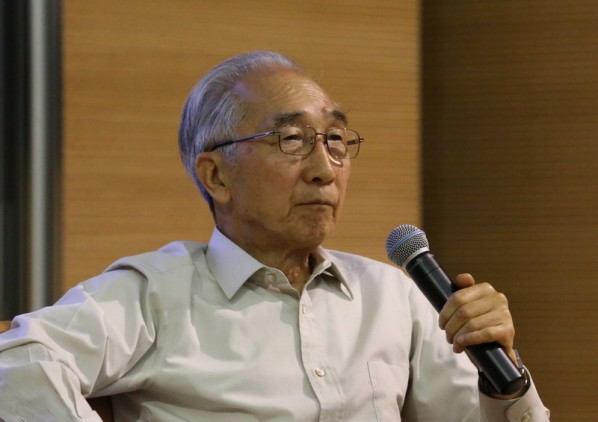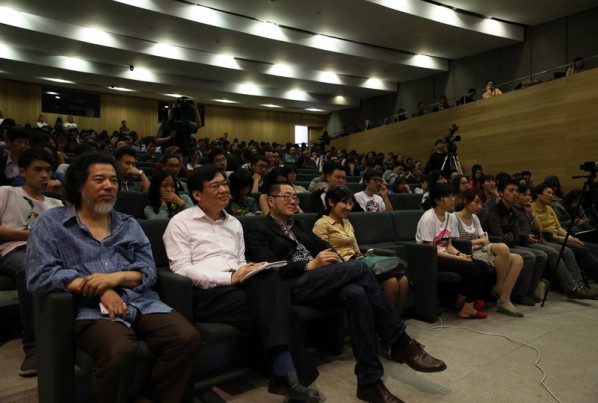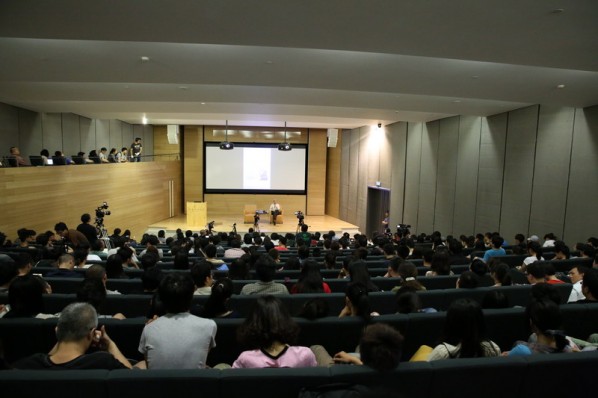
Jointly hosted by the Foundation Art Department of the School of Plastic Arts, CAFA, and CAFA Art Museum, “Knowing CAFA” Series Lecture No.3 was held at the Academic Lecture Hall of CAFA Art Museum, with a lecture from Jin Shangyi, former Dean of CAFA. The theme was “Teaching Reform in CAFA since the 1980s and 1990s”.
Gao Tianxiong, Director of the Foundation Art Department of the School of Plastic Arts, CAFA, initially briefed the audience on the relevant background of Jin Shangyi. He said, It was a special and critical period from 1987 to 2001 when Jin Shangyi served as the President of CAFA, at this time it was an opportunity to deepen the reflection of the Cultural Revolution, as well as offering a comprehensive introduction to Western culture and art. Jin Shangyi calmly perfected the teaching ideas and system of CAFA, built on the work of Xu Beihong, with the objective facts.
After the reform and opening up, China was facing a serious problem in rebuilding on the ruins, that was same in the field of art. Jin stressed that to “know CAFA”, one should clearly know the teaching traditions which played a fundamental role at this stage.

Teaching the traditions of CAFA
Jin said, the Western academy of fine arts emerged in China after the Revolution of 1911, along with the National Beijing Art School (National Beiping Art School), which was built in 1918, which was representative of the time. There were only two majors including Chinese painting and Western painting (oil painting), reflecting that oil painting was an extremely important part of the academy of fine arts in China.
He said oil painting itself was realistic, and that abstract beauty originated from the truth. Today, the basic courses of drawing and color aimed to solve the problem of art capabilities, instead of style. He emphasized that whatever style and path it was developing, the basic capabilities were necessary. Since the founding of CAFA, it has always been emphasized that the two basic requirements are foundation and innovation in art.
Adjustment to the teaching structure of CAFA in the 1980s and 1990s, against all the odds, Jin Shangyi established the majors of design and architecture into CAFA where there was a deep tradition established which is the foundation structure of multidisciplinary teaching today. Jin shared his thinking about the establishment of the new majors at that time. In addition, with his effort, the Foundation Art Education Department and studios had also been set up, which played an important role in CAFA thus forming a teaching pattern for the modern academy of fine arts.

The future direction of the CAFA
Artistic development is closely related to social requirements. Different from the development of Western oil painting, which developed step by step, oil painting was brought to China by Xu Beihong and etc. at the end of 19th century, and initially directly painting, which lacked the classical foundation. Chinese artistic development skipped over Western modernism style, directly into contemporary art. In fact, this could be regarded as one of the “Sequelas” of the Cultural Revolution, after the Cultural Revolution, people needed to release their pent-up emotions, and the forms of conceptual art such as performance, installation, etc. offering the artists the possibility of more direct expression, which was similar to the rapid development of abstract painting of the West, after World War II, because contemporary art was oriented towards “concept”.
He said, China needed modernist painting today. Because, in fact, China was still in the initial period of the industrialization, as a large country with a large population, we had not only seen the rapid development of major cities, but also the vast rural areas. It was necessary to truly construct a modern civilization with modern art. As a student of the academy, he/she should also learn to calm the irritable mood, and sincerely learn, instead of pursuing quick success.
After the speech by Jin, Professor Gao Tianxiong and Gao Hong, party secretary of the CAFA respectively published their reflections.
Photography: Dong Huiping, Quan Jing/ CAFA Art Museum
Text: Chen Yifei, translated by Chen Peihua, edited by Sue/CAFA ART INFO




























